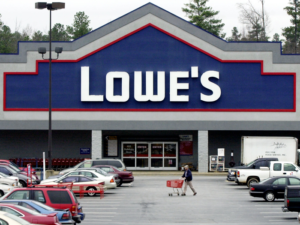Understanding the difference between wholesale and retail is crucial in commerce. Whether you’re a budding entrepreneur, a seasoned business owner, or simply an informed consumer, comprehending these two terms will empower you to make more informed decisions about buying or selling products. In this article, we’ll delve into the intricacies of wholesale and retail, exploring their definitions and highlighting why knowing their disparities holds significant value.
Jump Ahead To :
What Is The Difference Between Retail and Wholesale?
Wholesale can be defined as purchasing goods in large quantities directly from manufacturers or distributors at discounted prices. Wholesalers then sell these products to retailers or business consumers who sell them to individual customers.
On the other hand, retail involves selling products directly to end consumers at a higher price compared to what wholesalers pay. Wholesale transactions typically involve bulk orders that allow for substantial savings due to economies of scale.
This is why wholesalers are usually sought after by retailers who need a steady supply of goods at competitive prices. In contrast, retail is about catering to individual customers’ needs by offering smaller quantities through physical stores or online platforms.
The distinction between wholesale and retail extends far beyond mere semantics; it has profound implications for both businesses and consumers alike. For entrepreneurs looking to establish their ventures, comprehending these concepts helps determine which path aligns better with their goals and resources. While opting for wholesale might seem enticing due to lower costs per unit, it requires managing larger inventories and establishing relationships with suppliers.
For consumers, understanding how products are priced differently at various stages provides valuable insights into evaluating deals and making informed purchasing decisions. It allows individuals to decipher whether they are paying retail prices (which usually include markups) or if there’s a possibility of accessing better deals through wholesale channels.
Recognizing the difference between wholesale and retail goes beyond a mere matter of vocabulary. It is an essential aspect of commerce that impacts businesses, suppliers, and consumers at various levels.
By delving into the nuances of these terms, we can unlock a wealth of knowledge that empowers us to navigate the market intelligently and make informed choices when buying or selling products. So let’s get started !
Wholesale: The Big Picture
When it comes to understanding the difference between wholesale and retail, it’s essential to grasp the fundamentals of the wholesale business model. Wholesaling involves buying large quantities from manufacturers or distributors and selling them to retailers, merchants, or even other wholesalers.
In this process, wholesalers act as intermediaries between producers and retailers, bridging the gap in the supply chain. Wholesalers typically purchase goods at a lower price per unit due to their ability to make bulk orders.
They then mark up the resale prices. This allows them to earn a profit while offering competitive pricing to retailers.
The primary focus of wholesalers is on volume sales rather than individual transactions. By selling in large quantities, they ensure that goods are efficiently distributed throughout the market.

Role of Wholesalers In The Supply Chain
Wholesalers play a vital role in ensuring a smooth flow and distribution of products within the supply chain. They act as middlemen who consolidate inventory from various manufacturers and distribute it strategically across multiple retailers or smaller businesses.
One essential function of wholesalers is managing inventory levels. They often maintain large warehouses where they store products until they are ready to be shipped to retailers.
By keeping stock readily available, wholesalers provide an efficient supply stream for retailers who might not have space or resources for storing bulk quantities. Another crucial role that wholesalers fulfill is facilitating logistics and transportation.
They handle transportation logistics by coordinating shipments from manufacturers’ facilities to their warehouses and retail locations. This logistical expertise ensures that goods reach their intended destinations promptly and efficiently.
Target Customers and Market Reach
Wholesalers primarily target business customers like retailers, e-commerce platforms, restaurants, or other wholesalers. Unlike retail establishments that directly interact with end consumers, wholesalers focus on catering to the needs of other businesses.
They aim to provide retailers with a diverse range of products and a reliable supply chain network. The market reach of wholesalers can vary significantly depending on their scale and specialization.
Some wholesalers may operate locally, serving retailers within a specific region or city. Others may have a national or global presence, supplying products to retailers across different states or countries.
Wholesalers often build long-term customer relationships, offering additional services such as order customization, product sourcing assistance, or even tailored financial arrangements. This collaborative approach helps foster strong partnerships that benefit wholesalers and their retail clients.
Understanding the role of wholesalers in the supply chain and recognizing their target customers is crucial for comprehending the broader picture of wholesale operations. By acting as intermediaries between manufacturers and retailers while efficiently managing logistics, wholesalers ensure that products are available where consumers need them most.
Retail: Getting Up Close and Personal
Overview of Retail Business Model
When it comes to the difference between wholesale and retail, understanding the retail business model is crucial. Retailers are the final link in the supply chain that connects products with end consumers. They play a pivotal role in bringing goods directly to the public, creating an accessible marketplace for everyday shoppers.
Unlike wholesalers who sell in large quantities, retailers focus on selling individual products or smaller bundles that cater to the diverse preferences of their target customers. One key aspect of the retail business model is its emphasis on physical storefronts or online platforms where consumers can directly interact with products.
Whether it’s a charming brick-and-mortar shop down your local main street or an intuitive e-commerce website at your fingertips, retailers prioritize convenience and accessibility to attract customers. This direct engagement allows retailers to curate unique shopping experiences tailored to their audience, providing them with choices that meet their needs and desires.
Role of Retailers In The Supply Chain
Retailers act as intermediaries between wholesalers (the suppliers) and consumers (the buyers). They bridge this gap by purchasing products from wholesalers in bulk and then reselling them individually or in smaller quantities directly to end consumers. By doing so, they take on various responsibilities within the supply chain ecosystem.
Firstly, retailers are responsible for selecting the right mix of products that align with their target market’s preferences. This involves conducting market research, analyzing consumer trends, and staying attuned to shifting demands.
Once they have determined which items resonate most effectively with their customer base, they negotiate purchasing terms with wholesalers and stock their inventory accordingly. Secondly, retailers focus on marketing and promoting these products to attract customers’ attention.
They invest significant effort into creating eye-catching displays or optimizing their online presence through engaging content and effective search engine optimization (SEO) strategies. Through clever branding, smart pricing strategies, and persuasive advertising campaigns, retailers aim to entice consumers to choose their stores over competitors.

Direct Interaction With End Consumers
One of the defining characteristics of the retail business model is the direct interaction retailers have with end consumers. Unlike wholesalers, who primarily deal with businesses and other intermediaries, retailers engage directly with individuals looking for products and services.
This face-to-face interaction allows retailers to build relationships, understand consumer preferences personally, and tailor their offerings accordingly. By directly engaging with shoppers, retailers can provide exceptional customer service that addresses individual needs.
Whether it’s offering personalized recommendations based on a customer’s style or shopping history or providing assistance in navigating through complex product choices, retailers strive to create a positive shopping experience that encourages repeat visits and fosters customer loyalty. Furthermore, this direct connection enables immediate feedback regarding product quality, pricing effectiveness, or consumer concerns.
Whether through surveys conducted at point-of-sale or online reviews left by customers after their purchase, this feedback loop provides valuable insights for retailers to refine their offerings and deliver an improved shopping experience. The retail business model focuses on connecting products directly with end consumers through physical storefronts or online platforms.
Retailers act as intermediaries in the supply chain by selecting the right mix of products from wholesalers and marketing them effectively to attract customers’ attention. The direct interaction between retailers and consumers allows for personalized experiences that cater to individual preferences while fostering relationships built on trust and exceptional customer service.
Pricing Dynamics: From Bulk to Individual Units
Wholesale Pricing Strategies
When it comes to wholesale pricing, the name of the game is bulk discounts and economies of scale. Wholesalers have the advantage of purchasing large quantities directly from manufacturers or distributors, allowing them to negotiate lower prices per unit. This means that the more you buy, the lower the price per item.
It’s like going to your favorite burger joint and getting a discount for ordering a combo meal instead of just a burger. Additionally, wholesalers often have significant negotiation power when dealing with suppliers due to their large order volumes.
They can leverage their purchasing muscle to secure better deals and favorable terms. This is where they shine in harnessing their experience and relationships with suppliers to get the best possible prices for their customers.
However, because wholesalers operate on thinner profit margins compared to retailers, they need to sell higher volumes to turn a profit. It’s all about quantity over quality here, as wholesalers aim for rapid turnover rather than relying on higher markups per item.
Retail Pricing Strategies
Retailers take a different approach when it comes to pricing strategies. Instead of focusing solely on bulk purchases and negotiating deals with suppliers, they primarily rely on taking existing wholesale prices and marking them up before selling them individually or in smaller quantities.
This markup accounts for various factors such as operating costs (rent, utilities), employee wages, marketing expenses, and desired profit margin. In some cases, retailers may also adjust prices based on market demand or competition.
One advantage retailers have over wholesalers is greater flexibility in setting prices according to market demand. For example, during peak seasons or special occasions like Valentine’s Day or Christmas, when demand for certain products increases significantly, retailers can adjust their prices accordingly to maximize profitability.
However, because retailers purchase goods at higher wholesale prices and aim for higher profit margins, they often sell in smaller quantities than wholesalers. They cater to consumers who prefer convenience and a more personalized shopping experience.
The pricing dynamics between wholesale and retail differ significantly. Wholesalers benefit from bulk discounts and economies of scale, as well as negotiation power for large orders.
Their focus is on higher sales volume despite lower profit margins per item. On the other hand, retailers rely on marking wholesale prices to cover their operating costs and desired profit margins.
They have greater pricing flexibility based on market demand but sell in smaller quantities. These differences in pricing strategies contribute to distinguishing the roles of wholesalers and retailers in the marketplace.

Product Assortment: Catering to Different Needs
Wholesale product assortment considerations
When it comes to wholesale, the name of the game is variety. Wholesalers understand that retailers have different needs and preferences, so they strive to offer a large assortment of products.
Whether it’s clothing, electronics, or even gardening supplies, wholesalers aim to have something for everyone. This wide range of options allows retailers to pick and choose the products that best fit their target customers’ demands.
In addition to catering to diverse retailers, wholesalers also focus on serving specific industries or niches. By specializing in a particular market segment, wholesalers can gain a deep understanding of their customer’s requirements and stay ahead of trends within that industry.
For example, a wholesaler specializing in baby products would have a comprehensive selection of baby essentials like diapers, bottles, and cute little onesies. This specialized approach helps build trust between wholesalers and retailers while ensuring that both parties are well-equipped to meet the demands of their customers.
Retail product assortment considerations
In contrast to wholesale, retail takes a more curated approach to product assortment. Retailers carefully select which items make it onto their shelves based on their target customers’ preferences.
They consider demographics, lifestyle choices, and current market trends. A successful retailer understands that offering various products tailored specifically for their customer base is crucial for business growth.
Whether it’s luxury fashion brands for high-end shoppers or eco-friendly household items for environmentally conscious consumers—you’d be hard-pressed not to find exactly what you’re looking for on a retailer’s shelves. What sets retail apart from wholesale is the importance of creating a complete shopping experience by offering complementary products.
Imagine walking into your favorite clothing store and finding not only stylish outfits but also a selection of accessories, shoes, and even fragrances that perfectly match your new wardrobe. Retailers strive to make shopping convenient and enjoyable by providing all the elements necessary for customers to have a satisfying retail therapy session.
This distinction between wholesale and retail regarding product assortment plays a vital role in meeting the needs of both retailers and consumers. Wholesalers provide diverse options for retailers, ensuring they can cater to their specific customer base.
On the other hand, retailers offer a curated selection that aligns with their customers’ preferences while creating an immersive shopping experience. So next time you step into a store or browse an online marketplace, take a moment to appreciate the careful thought put into curating the products available—because behind every shelf lies the intricate dance between wholesale and retail.
Conclusion
These differences in logistics and distribution processes contribute to the overall distinction between wholesale and retail operations. While wholesale focuses on supplying large quantities of products at lower prices to retailers, retail caters directly to individual consumers by offering a curated selection and personalized shopping experiences.
In wholesale, customer relationships are primarily business-based, emphasizing efficiency and professionalism in retail interactions. On the other hand, retail revolves around building personal connections with individual customers by providing tailored services and addressing their specific needs.
By comprehending these distinctions and acknowledging their importance in various aspects, such as pricing dynamics, product assortment, logistics, distribution processes, and customer relationships, businesses can make informed decisions that align with their goals. Remember that both wholesale and retail play critical roles in the overall supply chain ecosystem.
The symbiotic relationship between them ensures the smooth flow of goods from manufacturers to end consumers while offering distinct benefits for each player involved. With this understanding in mind, businesses can thrive by leveraging the unique advantages offered by both wholesale and retail channels – ultimately driving growth and success in a competitive marketplace.






